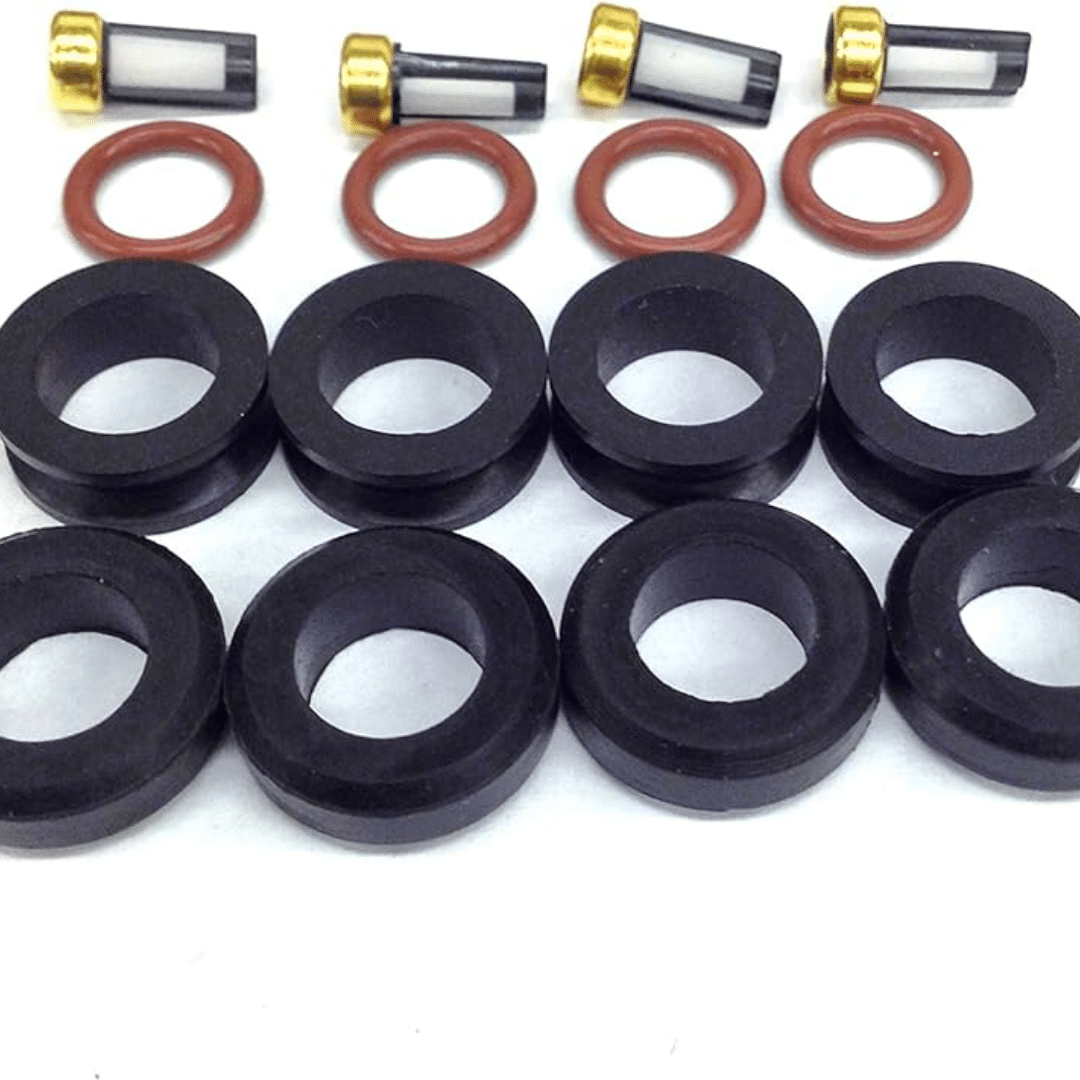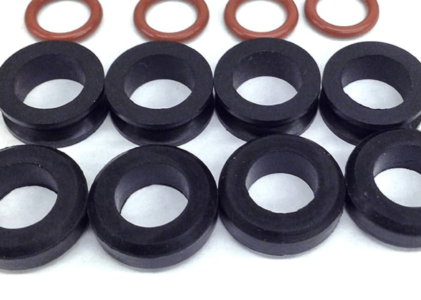The injector seal is a part that you will find at each end of your injectors. Its role is to guarantee their tightness. A defect on your injector seal would therefore be the cause of a leak in your injector, which could also cause an engine malfunction.
The main mission of the injectors is to ensure the spraying of fuel within the engine. Their tightness being guaranteed by two injector seals also called O-rings, you will find these parts at the cylinder head.
The injector seals are represented by elastic rings to reduce vibrations and noise when the engine is running. Please note that these types of seals should be distinguished from injection pump seals. At the level of each injector, you can find different seals:
- On the upper part of your injector: here you will have the connection between the injector and the fuel rail of the engine system;
- On the lower part of your injector: the connection between the injector and the engine ensures the delivery of fuel.
Important: if you are dealing with a vehicle with a diesel engine, the diagram will be completely different. In fact you will find your injector seals next to the injector return and a copper seal located between the cylinder head and the base of the injector.
To remove this part, you will, therefore, need a special extractor. A metal olive will therefore ensure the tightness of the inlet of your injectors and not a seal.
How do you know if the injector seals are dead?
The injector seal is a part that can wear out over time. In fact, the most common malfunction is an injector leak. This, therefore, indicates that your injector seal is completely broken and that there is no longer any seal at the level of your injector. In the event of an injector leak, various symptoms can alert you to the wear of your seals:
- The presence of black mud at the injection well;
- A smell of fuel;
- Overconsumption of fuel;
- A drop in power especially during acceleration phases ;
- Vehicle jerks;
- Starting problems
Indeed, due to the leak in your injectors, you will have a smell of fuel in the passenger compartment of your car. In addition, your engine will lose power. If there is a problem, do not hesitate to dismantle your injectors: a visual check will allow you to see their condition, or even if they are cracked, torn and have lost their elasticity.
Why replace an injector seal?
As you may have understood, the injector seal is a part which guarantees the sealing of your injector. Due to fuel spraying within the engine, a leak will cause a leak.
You will also have various disturbances linked to the air/fuel mixture and the combustion of your car. If you do not change your defective injector seal, other parts may be damaged: the catalyst, the injection pump, the injectors.
Please note that it is therefore strongly recommended not to continue driving with a damaged injector seal. In addition, it is a relatively accessible piece.
Act quickly: this will allow you to preserve your engine, its components and their lifespan.
How to change an injector seal?
When your injector seal is dead, you may have a fuel leak. This will therefore affect the proper functioning of your engine and risk damaging your injection system. We advise you to replace all your injector seals at the same time. Please note that they are sold as a kit.
Material :
- Toolbox
- Degreaser
- Injector Seal Kit
- Protective gloves
- Protective glasses
Step 1: Find the location of your injectors
To access your injectors, you will have to lift the hood. Consider removing the engine cover if you find one. Most often, the injectors will be placed at the engine and connected to the injection pump. Then disconnect the electrical harness after disconnecting the battery, then the air mass flow meter connector. Don’t forget to remove the fixings from your harness support.
Step 2: Remove Worn Injector Seals
Now it’s time to remove the faulty injector seals. To do this you will need to remove the pipe nuts and all the screws which are used to secure your injectors. Dislodge the injectors from the injection well and remove the injector seals.
Step 3: Place the new injector seals
Use a degreaser to clean the seal face and the inside of the injection well for the seal located there. Also remember to degrease the injector body and properly position your injector seals within the throat. Reassemble your parts, making sure to proceed in the reverse order of disassembly. Once you’re done, start up and check your injector seals for tightness.
How much does it cost to change an injector seal?
Depending on your injector type, the price of your injector seals may vary. If it is a gasoline injector, the injector kit can be available from $15. If you need a diesel injector instead, you can count on around $20 for the return seals. A copper gasket for the base of the injector is available for $5.
Remember to add the labor cost if you go through a professional. Indeed, for seized injectors for example, the intervention will be more complex and will require more time. Changing your injector seal could cost you between $200 and $300.
The role of injector seals is to ensure the sealing of your injectors. In addition, it guarantees the perfect functioning of the fuel injection system in your vehicle’s engine. If worn, you risk leaking your injectors.

